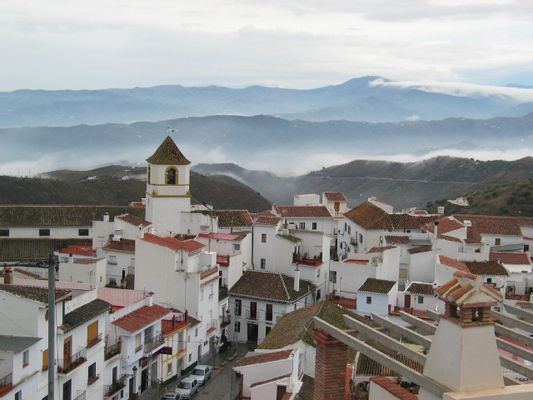The thermal springs and 15th-century Arab baths near this Andalusian mountain town draw visitors year-round. Deep gorges and medieval streets tell stories of Moorish rule.
Alhama de Granada sits on a rocky outcrop above the Río Alhama gorge, 50 kilometers southwest of Granada. Roman and Moorish thermal baths, whitewashed houses along cliff edges, and clear views of the Sierra Nevada mountains shape the town. Walk through narrow streets to see the 15th-century Santa María de la Encarnación Church, remnants of a Moorish castle, and the Inquisition House. Below the town, the Alhama Gorge carves through sandstone layers, and the Sierra de Tejeda Natural Park spreads south with marked paths. Bars here serve small plates of food with drinks, and in February, the Candelaria festival fills the streets with fires and traditional music.
Thermal Baths and Spa Visits
Cross the Roman bridge over the Río Alhama to access thermal springs in use since the 1st century. At the Balneario de Alhama hotel, mineral-rich waters heated to 47°C fill indoor baths offering mud therapy and underwater massages. From June to October, you can use the nearby public hot pool at no cost, shaded by poplar trees. For a small fee, explore the Moorish bathhouse and its horseshoe arches. Roman historians and the 14th-century scholar Ibn al-Jatib wrote about these waters, which still define the town. For less crowds, take the riverside path from the bridge through the gorge's shaded areas to reach the spa.
Key Buildings and Landmarks
The Santa María de la Encarnación Church rises over Plaza de los Presos, constructed on the site of a mosque after Christians took control in 1482. Its Gothic ceilings stand in contrast to the Inquisition House nearby, which retains its original stone exterior. Across from the church, the Alhama Granary displays arched windows and a carved emblem hinting at its 13th-century origins as a synagogue. Walk up Calle Baja Iglesia to the Iglesia del Carmen, a convent partly destroyed during French occupation in the 1800s. From there, a cliffside path reveals the gorge’s depth. The red-walled Moorish castle, rebuilt after an 1884 earthquake, and the debated Roman bridge—possibly medieval—round out the town’s structural highlights.
Hiking and Natural Areas
The Tajos de Alhama gorge drops 200 meters below the town, visible from paths near the castle and Iglesia del Carmen. Marked trails pass Mediterranean pines and rare yew trees along the sandstone cliffs. Ten kilometers east, Lake Bermajales has swimming areas and kayak rentals near poplar groves. To the north, the Sierra de Loja’s slopes attract paragliders, and the Sierra de Tejeda’s red-rock ridges challenge hikers. On clear winter days, snow-capped peaks of the Sierra Nevada appear from Alhama’s higher streets.
Festivals and Seasonal Events
On February 2, locals light bonfires in Alhama’s streets during Candelaria, sharing wine and meat stews with visitors. The same month, the Wine Festival in Plaza de la Constitución highlights local vineyards. During Semana Santa, religious processions move past churches draped in ceremonial cloths. In August, the Music Festival hosts rock and flamenco acts at Patio del Carmen, with tickets priced around 10€. Summer evenings often include free open-air concerts or theater performances, followed by gatherings at bars serving grilled meats and desserts drizzled with local honey.
Travel Tips and Logistics
Buses run four times daily from Granada to Alhama, or drive 90 minutes from Málaga via winding mountain routes. Park at the old town’s base and walk uphill past the Pomegranate Fountain to reach key sites. The tourist office on Plaza de la Constitución provides trail maps and updates on spa hours. Spring and autumn bring mild temperatures for exploring trails, while February suits those wanting to join Candelaria. Reserve spa treatments at Balneario de Alhama ahead of time, or visit the smaller El Ventorro complex uphill for thermal pools.

















